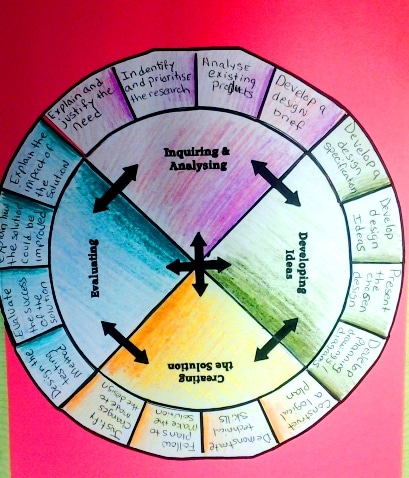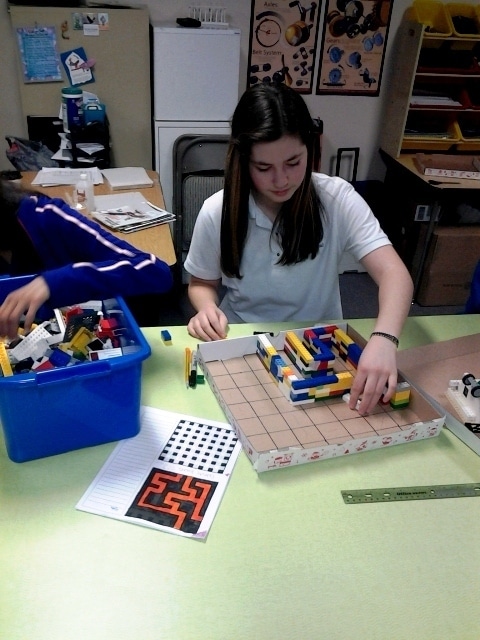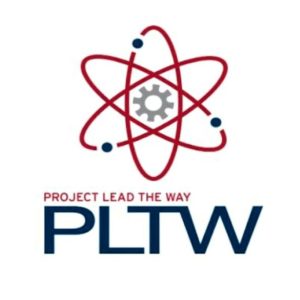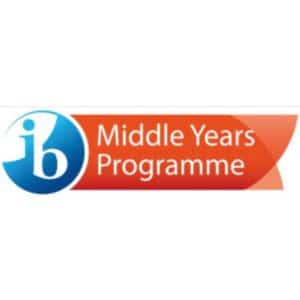Sheley Wimmer
IB Design – LIT and Forensics

Student Design Cycle Sample


Syllabus: 2021-2022
Ms. Sheley Wimmer Wimmers@corralesis.org
Course Description
Design, and the resultant development of new technologies, has given rise to profound changes in society: transforming how we access and process information; how we adapt our environment; how we communicate with others; how we are able to solve problems; how we work and live. Design is the link between innovation and creativity, taking thoughts and exploring the possibilities and constraints associated with products or systems, allowing them to redefine and manage the generation of further thought through prototyping, experimentation and adaptation. It is human-centered and focuses on the needs, wants and limitations of the user. Competent design is not only within the reach of a small set of uniquely skilled individuals but can be achieved by all. The use of well-established design principles and processes increases the probability that a design will be successful. To do this, designers use a wide variety of principles which, taken together, make up what is known as the design cycle.
MYP Design and PLTW courses challenges students to apply practical and creative thinking skills to solve design problems; encourages students to explore the role of design in both historical and contemporary contexts; and raises students’ awareness of their responsibilities when making design decisions and taking action. Inquiry and problem-solving are at the heart of Systems of STEAM, PLTW Robotics & Medical Detective courses.
The units in this course require the use of the design cycle as a tool, which provides the methodology used to structure the inquiry and analysis of problems, the development of feasible solutions, the creation of solutions, and the testing and evaluation of the solution. A solution can be defined as a model, prototype, product or system that students have developed and created independently. Through the use of an Engineering notebook, students studying STEAM will practice maintaining such a log, evaluating their designs, and showcasing their best work. As IB states, the “aim of all IB programmes is to develop internationally minded people who, recognizing our common humanity and shared guardianship of the planet, help to create a better and more peaceful world.”
The IB Design Technology Diploma Programme is based on a model of learning that incorporates knowledge, skills and design principles in problem-solving contexts, while at the same time maximizing the use of local and readily available resources. Through studying design technology, students should become aware of how designers work and communicate with each other. There is an emphases on a practical approach through experimental work.
Standards
The content of this course will cover: Common Core State Standards for English Language Arts & Common Core State Standards for Mathematical Practice 6-8 (www.corestandards.org), NM Career and Technical Education Standards (ped.state.nm.us/CTWEB/dl10/ CareerandTechnicalEducationStandards.pdf), Standards for Technological Literacy (iteaconnect.org/TAA/PDFs/xstnd.pdf), the National Health Care Foundation and Accountability (healthscienceconsortium.org/docs/foundation_standards_ac_jan2011.pdf), and the Next Generation Science Standards (http://www.nextgenscience.org/).
Aims
The aims of the teaching and learning of MYP Design (Systems of STEAM, Automation & Robotics, & Medical Detectives) are to encourage and enable the student to:
• Enjoy the design process, develop an appreciation of its elegance and power.
• Develop knowledge, understanding and skills from different disciplines to design and create
solutions to problems using the design cycle.
• Use and apply technology effectively as a means to access, process and communicate
information, model and create solutions, and to solve problems.
• Develop and appreciation of the impact of design innovations for life, global society and
environments.
• Appreciate past, present and emerging design within cultural, political, social, historical and
environmental contexts.
• Develop respect for others’ viewpoints and appreciate alternative solutions to problems.
• Act with integrity and honesty, and take responsibility for their own actions developing
effective working practices.
Learning Objectives: The course objectives are aligned to the four design assessment criteria:
A) Inquiring and analyzing
In order to reach the aims of design, students should be able to: Explain and justify the need for a solution to a problem for a specified client/target audience Identify and prioritize the primary and secondary research needed to develop a solution to the problem. Analyze a range of existing products that inspire a solution to the problem. Develop a detailed design brief which summarizes the analysis of relevant research
B) Developing ideas
In order to reach the aims of design, students should be able to:
Develop a design specification which clearly states the success criteria for the design of a solution
Develop a range of feasible design ideas which can be correctly interpreted by others
Present the final chosen design and justify its selection
Develop accurate and detailed planning drawings/diagrams and outline the requirements for the creation of the chosen solution
C) Creating the solution
In order to reach the aims of design, students should be able to:
Construct a logical plan, which describes the efficient use of time and resources, sufficient for peers to be able to follow to create the solution
Demonstrate excellent technical skills when making the solution
Follow the plan to create the solution, which functions as intended
Fully justify changes made to the chosen design and plan when making the solution
Present the solution as a whole, either in electronic form, or through photographs of the solution from different angles, showing details
D) Evaluating
In order to reach the aims of design, students should be able to:
Design detailed and relevant testing methods, which generate data, to measure the success of the solution
Critically evaluate the success of the solution against the design specification
Explain how the solution could be improved
Explain the impact of the solution on the client/target audience
Methodology
This course will be student-centered and address many different learning and assessment styles. Instruction and activities will vary from day to day but will be centered around inquiry-based units driven by a statement of inquiry and open-ended inquiry questions that we will continually reflect upon throughout a unit of study. Within these units there will be a mix of independent and small group research and projects, whole group lecture and discussion, written assignments, presentations, and reflection activities.
Global Contexts in Design:
In order to support the development of the learner profile and encourage “students to explore global challenges, address their own biases, and identify global solutions from different perspectives,” all courses within the IB incorporate what are known as global contexts. By addressing these global contexts, CIS students will hopefully come to fulfill the IB’s stated mission to “encourage students across the world to become active, compassionate, and lifelong learners who understand that other people, with their differences, can also be right.”
Assessment
Evaluations include both formative and summative assessments and reflections at the end of each unit. The assessment rubrics, particularly for IB Design, will be used to evaluate student progress. The final grade at the end of each quarter will be based primarily on project outcomes. Assessment in this class will be continuous and part of the learning process. The learning process includes risk-taking, receiving feedback, opportunities to use the feedback, and reflection. These assessments will gather evidence of learning from a variety of sources and tasks. Attention will be given to Approaches to Learning skills during the learning process and timely feedback will be shared with students and families.
Assignments and Grading:
Grades will be given in all summative assessments using the IB MYP prescribed assessment criteria, which is based on rubric scoring. Each rubric has banded scoring from 0 to 8. Remember, this rubric is specific to DESIGN and is different from the 0 to 7 rubric scale used as the final score. Prior to each summative assessment, students will be given a rubric with sentence descriptors that specifically explain what is required to achieve a particular banded score level (0 to 8). The assessment criteria are as follows:
Criterion A Inquiring and Analyzing Maximum 8
Criterion B Developing Ideas Maximum 8
Criterion C Creating the Solutions Maximum 8
Criterion D Evaluating Maximum 8
Overall IB Grading Scale:
7- Highly Advanced, 6-Advanced, 5- Highly Proficient, 4- Proficient (Passing), 3- Nearing Proficient, 2- Beginning Steps, 1- Minimal Understanding, 0- Not Attempted. Some unit formative assessments will be graded in both traditional and IB Grading. Grades will be posted in the classroom confidentially and weekly.
Academic Honesty
All students will be expected to adhere to CIS’s Code of Academic Integrity as outlined in the CIS Family Handbook. Plagiarism or failure to cite sources as per requirements will result in an office referral and no credit for the assignment. As per the student handbook, phones and other electronics will be silent and out of use during instructional time, including tutoring. If out, they will be confiscated!
Late Work Policy
Assignments turned in late will not be marked down in their overall score if turned in within a week of the due date. This philosophy is in keeping with the IB MYP assessment guide. I am specifically looking for deep understanding of concepts. Work that is turned in late will be noted as late on Managebac, but this will not affect the overall grade or the grade on the assignment. However, consistently turning in work late can manifest itself in other ways including lack of understanding of the concepts.
Make Good Decisions, Solve Problems, Show Respect
I feel it is important to allow students the freedom to explore a variety of methods in solving a problem, and to allow them to make mistakes. A very important component of the Design Cycle is to evaluate and reflect on the process involved in designing. Making mistakes is inevitable and allows students to self-reflect, learn from their mistakes, and encourages creativity and critical thinking.
Suggestions for Success in the MYP
Students (and adults), especially when working with technology, tend to leap before they look – jumping right into the creating of the actual product before they think about what they would like it to look like, and what sorts of design elements and features are important in the final product. By following the Technology Design Cycle, students are forced to take the time to investigate and plan before they begin creating. This gives them the opportunity to really understand what they want to accomplish with their finished product and how they will go about creating that product. One of the best parts about combining the IB Design Cycle and the PLTW curriculum is that it gives the students an authentic goal to complete and an organized structure in which to operate, where they can complete projects, both independently and in groups, while helping each other when they get stuck, exploring different ways of completing the task, and discovering new skills along the way.

For more information:

Leaders in Training
Find out more about this innovative program!

Biomedical Sciences
Learn about Project Lead the Way and our Biomedical Sciences Prorgram of Study

MYP Programme
Find out more about IB and our MYP Programme
